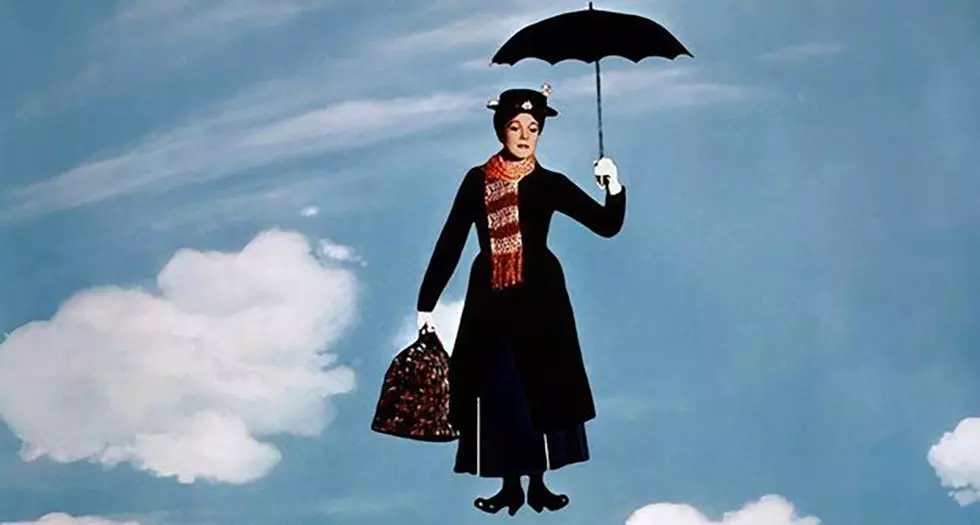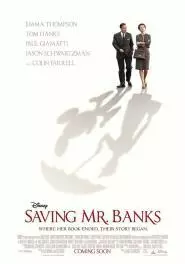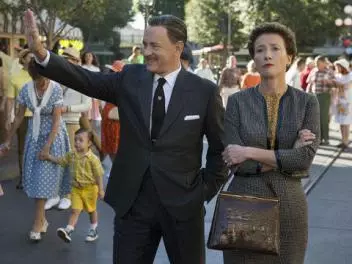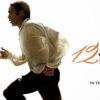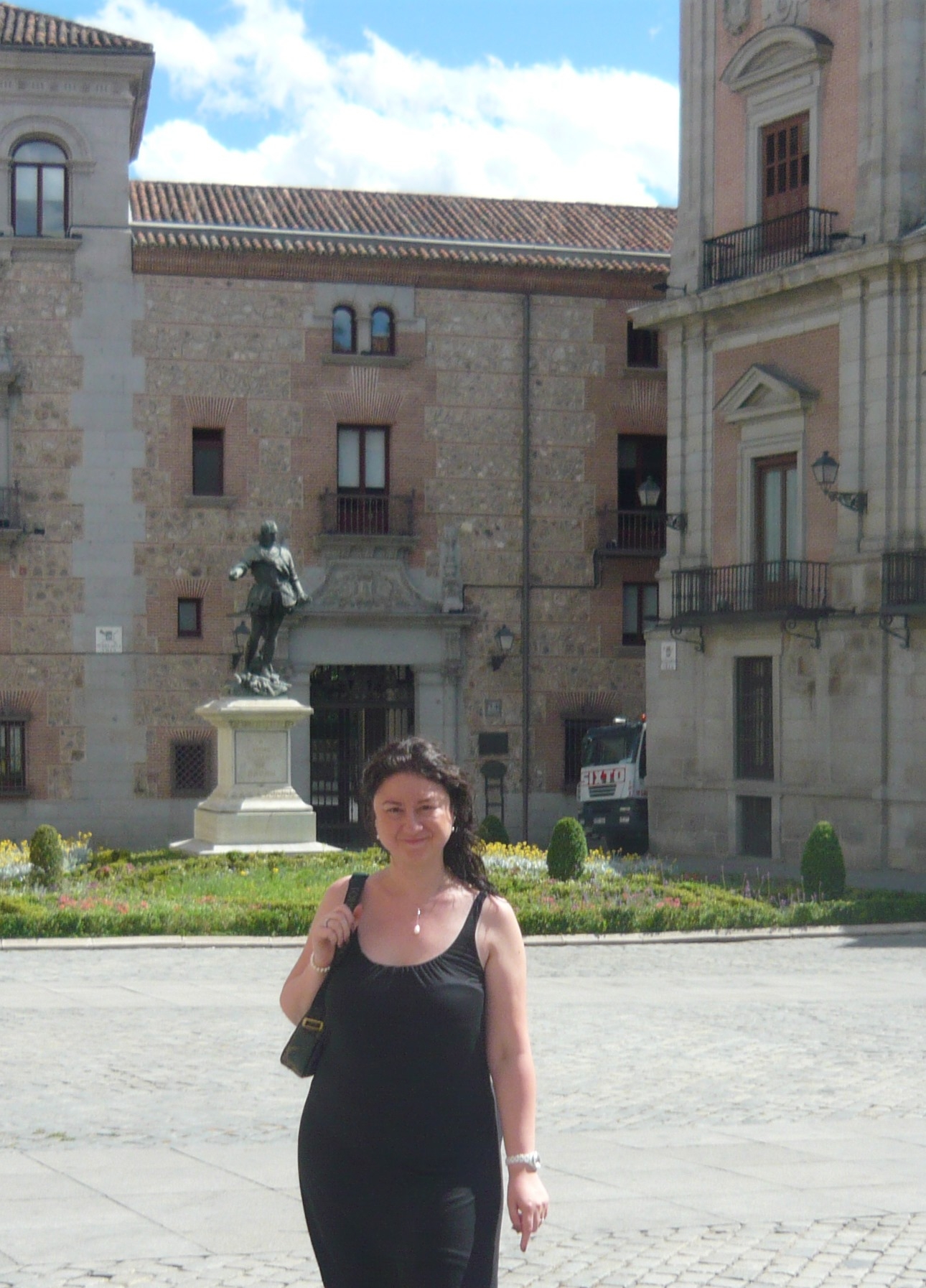The umbrellas with long handles that we use when it rains cats and dogs always remind me of Mary Poppins umbrella. If someone asks me now, if I would like to go on a journey with Mary Poppins, I would be like a kid in a candy store. Articulating my feelings, “Saving Mr Banks” tells the origin story of Mary Poppins and presents behind the scenes of the movie. Frankly, this movie flies me off to all new and different realms. Like me and Mary Poppins never left each other’s side throughout the film.
I think there’s not one soul amongst us that doesn’t know that arrogant and well-disciplined governess Mary Poppins, who flies using her enormous black umbrella. We get to know Mary Poppins, who has a wardrobe reminiscent of a regular 19th century English woman, as a super hero coming from heavens with dark colored clothes and a gigantic hat. In fact, what identifies Mary Poppins is the coal black umbrella of hers. Chosen as a “metaphorical” symbol of the gloomy rainy weathers of England, black umbrella is an important element that we identify Mary Poppins with. In reality, Mary Poppins is a very special person, because she has her own unique feature. She can tidy up a messy room just with a finger snap, she can fly and she can take out enormous household goods just from her small handbag. Having children under her spell with her magical powers, there’s no impossible for Mary Poppins.
Now, picture all this before your eyes! If you could manage to do this, we can continue to how Mary Poppins have been realized. Based on a true story, Mr. Banks shows us the behind the scenes of this Disney classic and tells us the story of the unstable relationship between legendary Walt Disney and author P. L. Travers. When his daughters persistently asked him to shot the film of their favorite book Mary Poppins, Walt Disney promised them that he would, but he didn’t realize at that time that keeping his promise would take 20 years.
Mary Poppins: The Mergence of Main and Side Stories
Consist of the merged main and side stories, “Saving Mr. Banks” shows the inner world of the author Travers perfectly. While we’re already talking about main and side stories, we should give details on these subjects. Within the side story, we watch “behind the scenes” moments of Mary Poppins and within the main story we watch the relationship between the author and Walt Disney. For example, when a ‘flashback’ cuts in, we see the “behind the scene” enactments of Mary Poppins. Besides, these enactments consist of phantasms and reality intertwined. Well then, how does phantasm and reality intertwine? Let me answer this immediately. Within the scenes, where phantasm dominates, Travers imagines the scenes that will be shot. Telling us the events happened between 1906 and 1965 from his own point of view, the author reminds us that we’re watching a “film within a film”. He already is the eyes and ears of the film! In fact, having us identify ourselves with Mary Poppins, Travers reminds us Poppins’ umbrella by using the “rain provides life” cue. Another detail is that the relation between object and character is as right as rain. For example, there are Walt Disney toys in Travers’ hotel room. Eh, at the end, the movie was being produced by Walt Disney! But what impressed me most is that director John Lee Hancock, who uses vivid colors, turned the scenes, shot in 2:35:1 cinemascope format, into a visual feast. This visual feast reflects the beginnings and the middle of the 1900s so good that you want the time machine has already been invented, so that you can travel back. The movie, really, embraces us and due to its strong aura, all the scenes become engraved on your mind.
Travers’ Experience
Let’s cut to the Travers’ experiences, which is the main theme of the movie. Sometimes, Travers’ anger and dissatisfaction raise difficulties for the production. Because the author always worries about that the film won’t be able to reflect the essence of the book. For me, the most important thing is Walt Disney’s 20 years long perseverance to keep his promise to his children. But it looks like, the life Travers led let her down so much that she can’t shake off all her bitterness and bad temper. The most obvious evidence of the bad temper of rebellious and delirious Travers is the lonely life she led. In fact, she was so lonely that Mary Poppins was her only friend. Actually, was not this the only reason for Walt Disney to pursue Travers? Actually, the most interesting part of this story is the “Mr. Banks” character which was inspired from the deceased father of the writer. May be this is the reason of her bitterness. Who knows? In general, Travers’ conversation with Walt Disney’s toy may be the sign of the loneliness and dissatisfaction of the writer who has chosen solitude after all she has been through. Because, used as a metaphor, the Disney toy makes all the problems, buried deep inside Travers’ personality, burst out. According to our analysis, Travers either postponed these problems or enshrined her own loneliness into her heart.
Marry Poppins: Marvelous Acting and Some Gaps
When examined superficially, the perfect storyline and the marvelous acts of Emma Thompson, who plays Travers, and Tom Hanks, who plays Walt Disney, make a cold fact appear before us. According to that cold fact, what we watched on the screen was multi-layered; and we get aware of this fact only at the end of the movie. The message is so deep that it’s hard to forget all along our life; because, maybe we will never watch another movie that teaches a powerful humanity lesson. However, it wouldn’t be right to finish the article without making this small critic: I think it was a bit irrational to show Colin Firth, who plays Mr. Banks, whose also gives his name to the title of the movie, within so few scenes. Hence it looks like something outweighed. And also, even, incorrect portrayal of Mary Poppins’ character within the scenes that show the behind the scenes moments of the original film tops it all. I wonder why they didn’t put any scene that shows Mary Poppins flying with her umbrella, which is a token of her identity? It’s hard to find a logical answer. It seems like, the behind the scenes was a bit mediocre. There could be more details.
In a nut shell: Even there were some faults, “Saving Mr. Banks” is a movie that can convey the feeling to the audience and become a friend with them successfully. In the last scene of the film, watching her own film, Travers cried so much that I also couldn’t keep my tears from flowing. Especially the music playing in the background was like the blood travelling in our veins. I suggest you not to miss this film. Everyone can find a piece from himself/herself in this movie.
Note: The film, which was nominated to academy awards in 13 categories, will be in the theatres on February 7th.
RATING OF THE FILM: 7.3
Saving Mr Banks
Director: John Lee Hancock
Cast: Emma Thompson, Tom Hanks, Colin Farrell, Paul Giamatti, Annie Rose Buckley, Ruth Wilson, Bradley Whitford
Duration: 125 min.
Production Year: 2013

